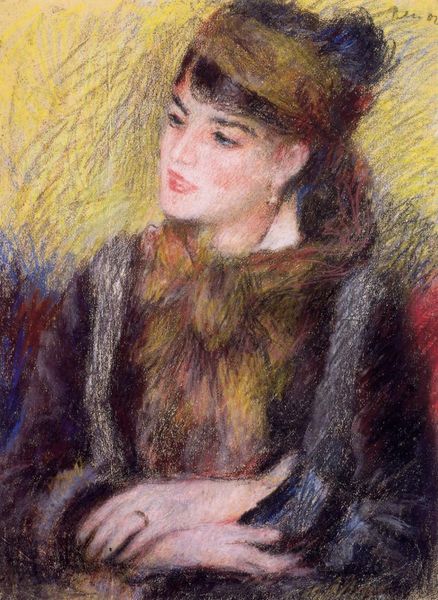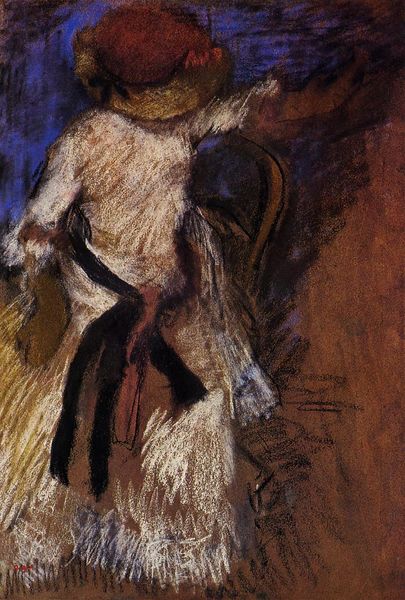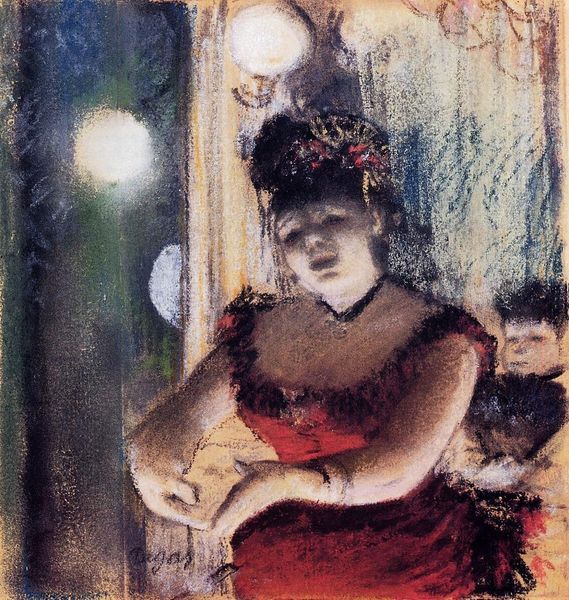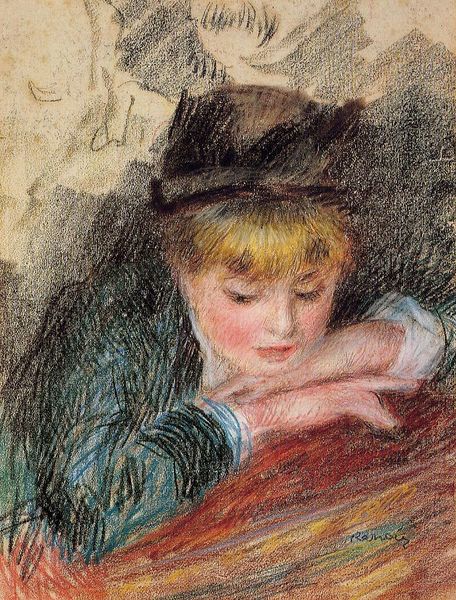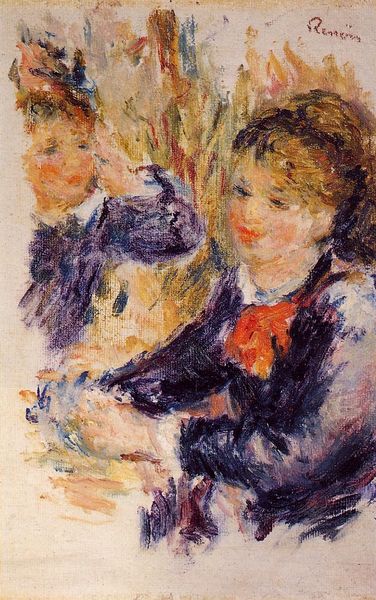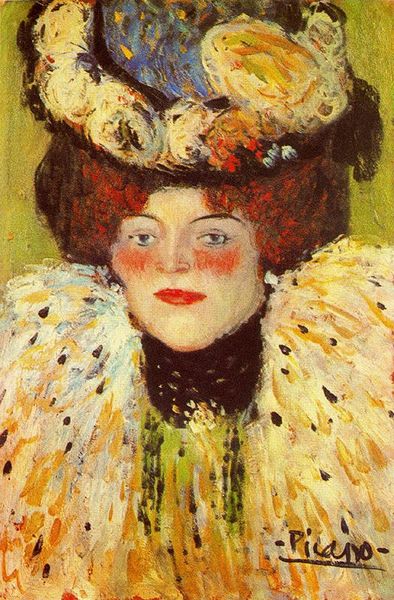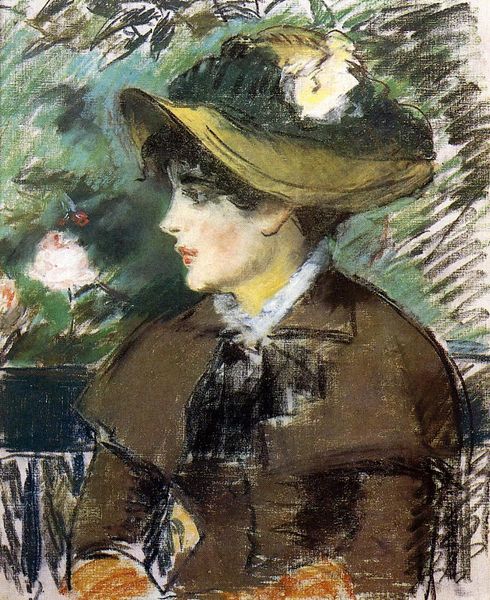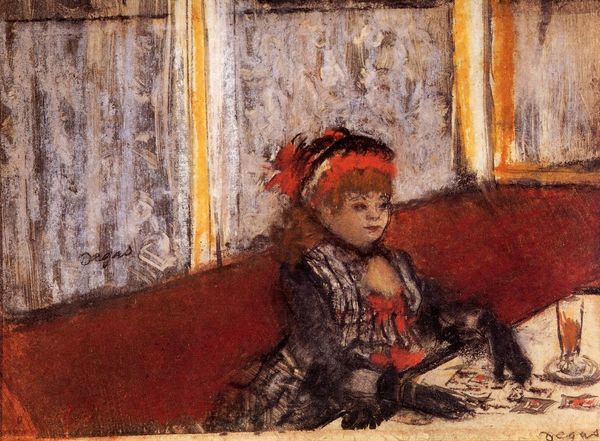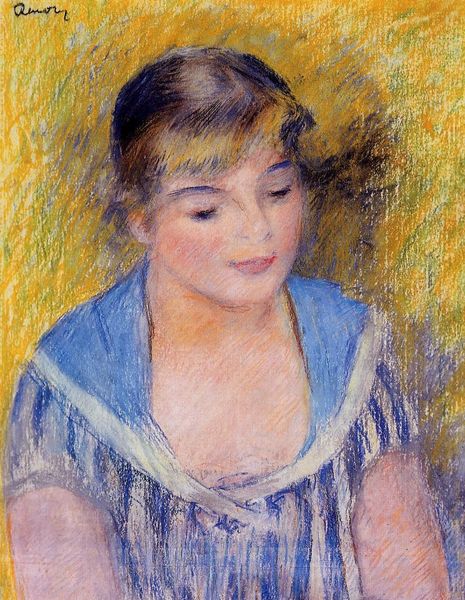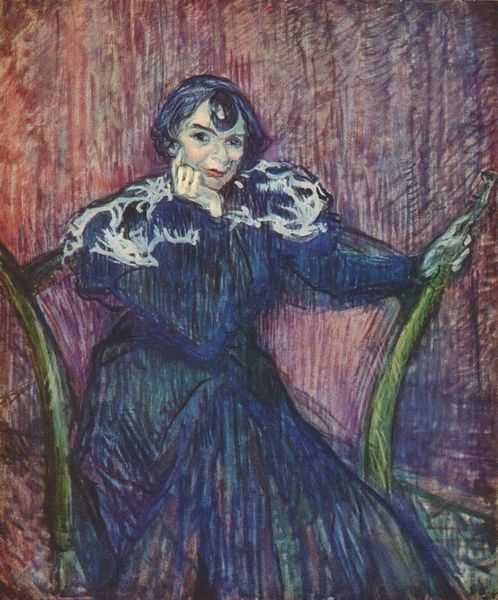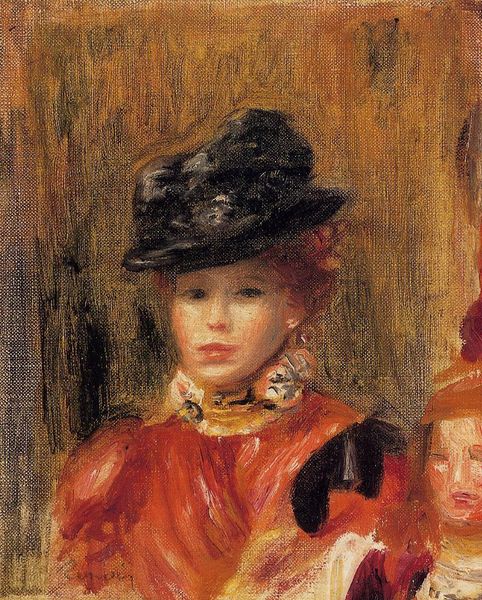
pastel
#
portrait
#
impressionism
#
figuration
#
oil painting
#
intimism
#
genre-painting
#
pastel
#
watercolor
Copyright: Public domain
Curator: Edgar Degas's "Cafe-Concert Singer" from 1879, now residing at the Norton Simon Museum, offers a glimpse into the Parisian nightlife. The piece is crafted with pastel and perhaps a bit of watercolor to achieve a vivid and atmospheric impression. Editor: It's quite arresting. The figure's bathed in this otherworldly violet light—almost spectral, and there’s a rawness in the pastel strokes. It feels more immediate, less 'finished,' highlighting a moment in the act of being observed. Curator: The fleeting nature of performance is captured here. Observe the gaslights blurred above and behind the singer, lending to an atmosphere of the café's clamor and effervescent life. There's a contrast with the female figure’s active labor with the passive gaze of the admirer behind her. Editor: I'm immediately drawn to the way Degas uses pastel almost like pigment; it isn't precious or delicate. The visible mark-making indicates a quickness of hand and emphasizes the physical act of creating the image; a woman working for an audience being drawn by an artist equally at work. You know, I wonder where he got his pastels? It must have been a specific maker able to handle such bright pigment... Curator: You're spot on regarding Degas’s engagement with immediacy. He was fascinated by modern life and entertainment as performance, and it is conveyed here. Consider the bold coloring of the singer, yellow accents providing visual contrast, while the admirer seems softened in shadows and pastel. She almost recedes into the background and gives her devotion to the singer. It might imply the stage performer carries unique or elevated meaning. Editor: Perhaps the shadowy figure offers a social commentary—class distinctions made clear through materials and labor, not merely aesthetic composition. After all, what materials did these patrons consume to attend such a concert and sit behind our performer? The social and economic realities aren't detached from Degas' technique. Curator: Indeed, and Degas shows us this connection so beautifully. This singer is enshrined in the ephemeral materials and the temporal nature of this social exchange. Thank you for noticing it! Editor: Well, thank you for revealing its deeper symbolism, a great use of color. This invites us to engage both with its aesthetic beauty and the very palpable world it represents.
Comments
No comments
Be the first to comment and join the conversation on the ultimate creative platform.

